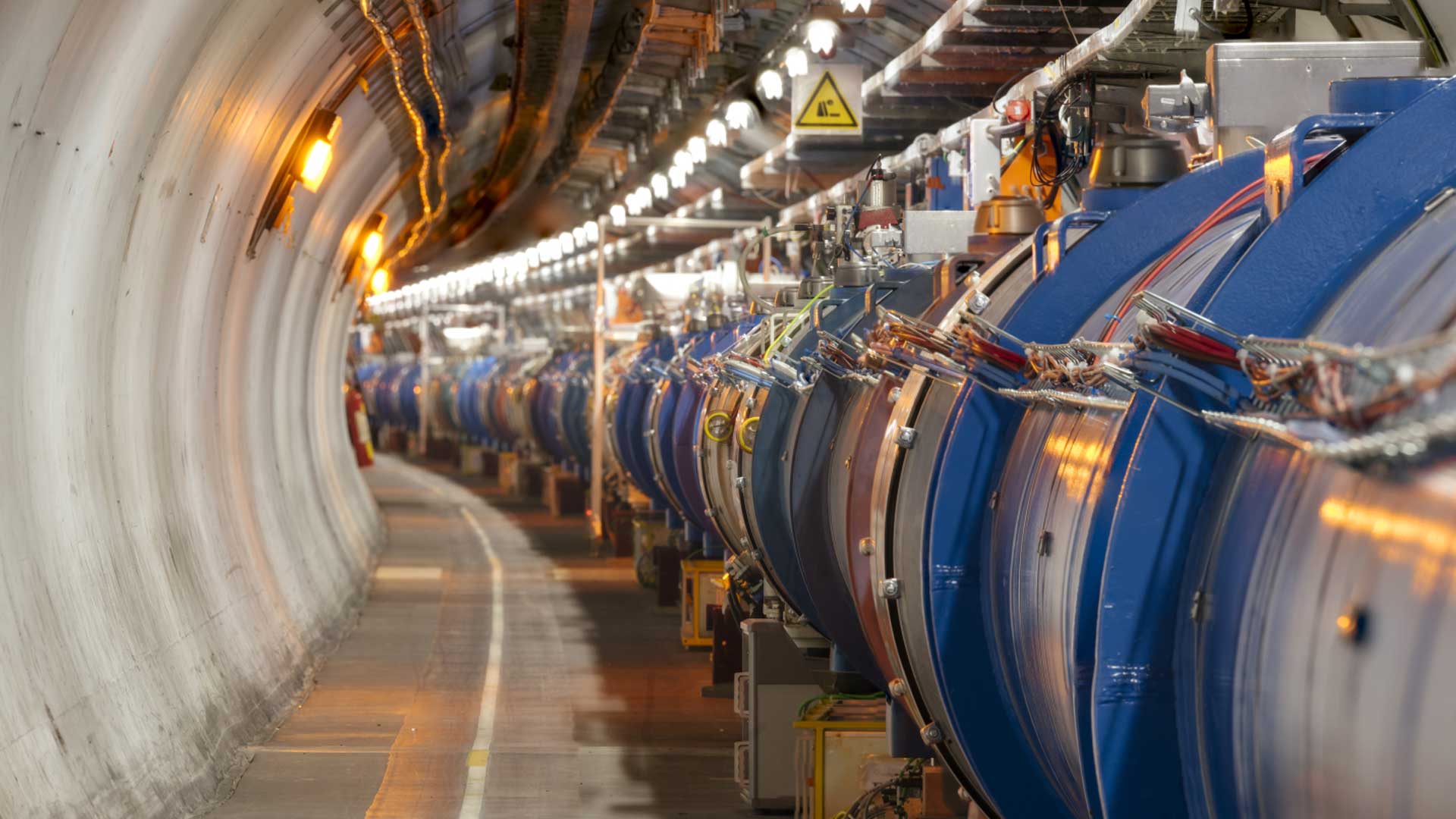
£639k project to keep LHC particles ‘on track’ nears completion
Huddersfield mechanical engineer Tom Furness recently completed a prototype of the new collimation system for the Large Hadron Collider, which will be shown to scientists from CERN in the New Year.

A UNIVERSITY of Huddersfield engineer spent 18 months at the world’s most famous scientific facility – the European Organisation for Nuclear Research (CERN), based in Geneva – while he researched an upgrade for one of the most crucial components of the Large Hadron Collider (LHC).
Now, Tom Furness has returned to Huddersfield, where he is now completing the £639,000 project to design and manufacture a working prototype collimator for use in the LHC.
Collimators are devices, which ensure that the beams of circulating particles that travel in bunches around the LHC, are cleaned and do not veer from their intended trajectory. Stray particles could cause serious damage, leading to a lengthy shutdown at the world’s largest and most powerful particle accelerator.
There is a project to boost the LHC’s luminosity – the number of particle collisions in a given time – in order to increase the amount of data that can be gathered in the search for new particles. This means that improvements had to be made to the LHC’s collimation system.
The three-year project was awarded to Dr Simon Fletcher, of the University of Huddersfield’s Centre for Precision Technologies. CERN and the UK’s Science and Technology Facilities Council provided funding of £639,336, and Tom Furness – who has a Master’s degree in mechanical engineering design at the University of Huddersfield and is currently completing a PhD – was appointed as research assistant.

CERN assignment
For Tom Furness, this led to the 18-month assignment at CERN, where he studied the technical challenges involved in designing and creating improvements to the collimation system. These have been described as two opposing jaws, about 1.2 metres in length that sit in close proximity to the beam. They have to be manufactured from material that can absorb radiation, since their role is to ‘tidy up’ stray particles.
While he was at CERN, Tom began to design the new collimator, which will be a refinement of an existing device, incorporating a new dynamic system.
“The whole idea is that these collimators are kept perfectly straight to ensure their primary functionality. As a result of absorbing these stray particles a lot of heat is generated, which in turn can cause deformations in the collimator jaws reducing their cleaning efficiency,” he explained.
“This project’s primary aim is be to devise a system that corrects these deformations, ensuring constant jaw straightness.
“We have incorporated a fibre-optic-based measuring system that will monitor the deflections, and a piezo ceramic actuation system that can manipulate the jaws’ structure to keep them straight.
“Generally, that would be a relatively straightforward design. However, the LHC’s operating environment is very hostile. The beam path is in an ultra-high vacuum that has fewer particles in it than outer space. To reach that level of vacuum anything put in the LHC has to be heated to 250 degrees centigrade for two days. And the collimators are normally located in are some of the most highly radioactive areas in the whole LHC.”
The Huddersfield researcher said that he had proved computationally that his refinements to the system would work as planned. Now, he is involved in the procurement of a prototype. It will be constructed by March 2019 and then undergo tests in the UK before being delivered to CERN for full validation.
More news
MSc high-flyer makes his mark in sensor technology
For his doctorate, engineering student Ali Iqbal will develop sensors for fault diagnosis, thereby increasing reliability and lowering costs
IMechE award for dual-operation wheel profile
Researchers in the Institute of Railway Research developed a wheel profile that runs on both tramways and on regular mainline track
Major solar power study discovers 25% power loss
Regional ‘hot spots’ account for the power loss and these are more prevalent in the North of England than in the south